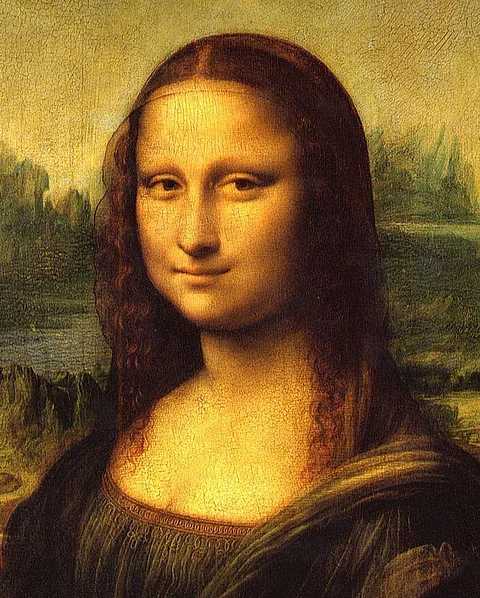
- Home
- न्यूजग्राम
- India
- World
- Politics
- Entertainment
- Culture
- Lifestyle
- Economy
- Sports
- Sp. Coverage
- Misc.
- NewsGram Exclusive
- Jobs / Internships

By- Khushi Bisht
The Mona Lisa is a half-length oil portrait of a woman painted by Leonardo da Vinci, the most popular Italian artist of all time around 1503. Leonardo da Vinci's Mona Lisa is calm and pensive and is widely viewed as the most profound portrait ever painted which is riddled with many unsolved mysteries.
Leonardo da Vinci was a legendary figure in history. The Mona Lisa was his personal favorite and he worked on it for years. There is no denying that the Mona Lisa is an outstanding work of art. For centuries, many elements of this artwork have been the topic of considerable debate. In this post, we'll discuss some of the theories about the artwork, as well as what historians and scholars claim about it.
Follow NewsGram on LinkedIn to know what's happening around the world.
Who was Mona Lisa?
The subject of this painting is perhaps the most contentious topic of discussion. It is widely assumed that this is a portrait of a wealthy Italian woman Lisa del Giocondo. It isn't proven, though, as there isn't enough proof to back it up. There is a slew of other plausible hypotheses about the Mona Lisa.
A contemporaneous replica of the Mona Lisa, probably painted by Andrea Salai and Francesco Melzi, two students of Leonardo da Vinci, was restored in 2011. Wikimedia Commons
Some scholars believe the artwork was inspired by Da Vinci's mother. While others claimed the woman was Isabella d'Este (Marchioness of Mantua). According to others, the painting depicts Gian Giacomo Caprotti da Oreno also known as Salai, who was Da Vinci's student, and his lover. It is also considered to be a self-portrait of Leonardo Da Vinci himself and according to the final explanation, the Mona Lisa is merely a consequence of Da Vinci's imagination.
Enigmatic Smile:
For more than five hundred years, Mona Lisa's perplexing smile and everlasting mystique have sparked a lot of discussion among researchers and historians. Her smile is said to be seen differently by different viewers, depending on the perspective from which the portrait is seen. There is also an assertion that her smile transforms into a vacant facial look depending on how you gaze at the portrait, specifically what distance you're gazing at it from.
It's difficult to tell whether the Mona Lisa is actually smiling or not. Her smile varies based on where you look. Wikimedia Commons
There are numerous other scientific theories for why people perceive the smile in various ways. It all comes down to where you put your attention and how your brain reacts. Harvard University scientists proposed a physiological rationale for Mona Lisa's enigmatic smile. Her smile becomes even more joyful, when you are not staring straight at it or if your gaze is drawn to the background. On the contrary, her smile vanquishes like a dim star when you squarely look at it.
As a consequence, it's difficult to tell whether the Mona Lisa is actually smiling or not. Her smile varies based on where you look.
The Mona Lisa Pose:
While the pose of the Mona Lisa may seem mundane and insignificant today, it was groundbreaking in the sixteenth century. Portraits in the past were contrived and rigid. However, this pose gave birth to a modern form of portrait painting that is still popular today.
The Mona Lisa pose was groundbreaking in the sixteenth century. Wikimedia Commons
In addition, the majority of portraits at the time were full length. Da Vinci's revolutionary cropping technique was transformative, and it was quickly replicated by a slew of other artists.
Well, much of this is conjecture, and we will never really know what Da Vinci actually meant. However, this painting pioneered a number of creative art methods. It demonstrated the artist's absolute knowledge of techniques and remains to pique the interest of those who see it.
The Mona Lisa, by Leonardo Da Vinci, is regarded as history's most celebrated painting. While Leonardo da Vinci died five centuries ago, his most famous painting, the Mona Lisa, with its depiction of a woman with an enigmatic smile, continues to captivate art lovers to this day.
